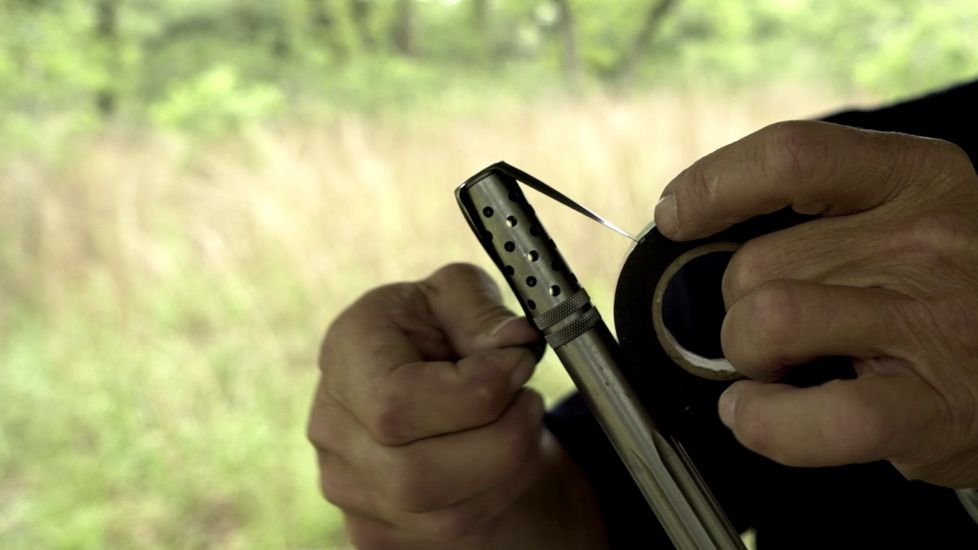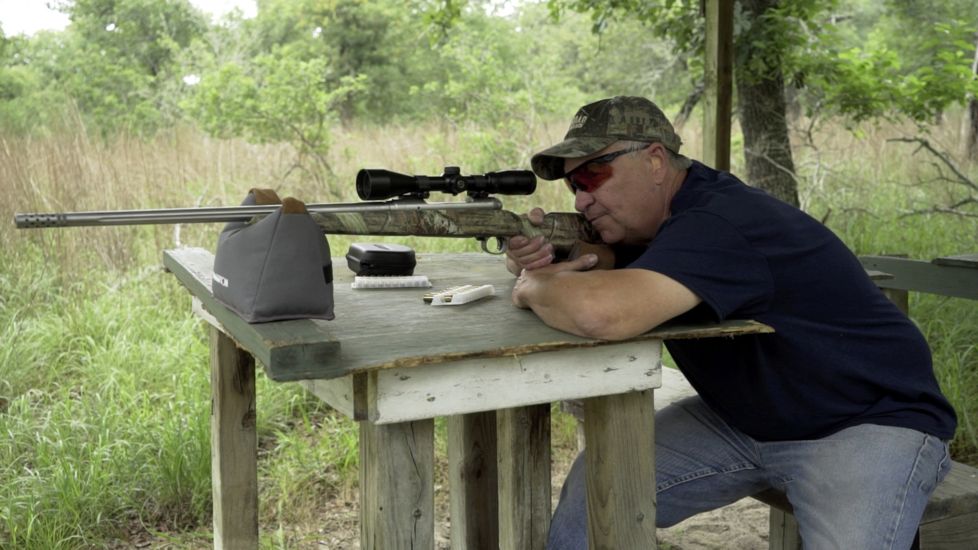Becoming a better hunter requires you to practice efficiently before your outing, and these shooting tips will help perfect your aim and technique with rifles and crossbows. When you improve during practice, that should translate to better shots on hunting trips and in competitive events. This article dives into some key rifle shooting tips that will upgrade your precision and performance -- and begrudgingly impress your buddies on the hunting ground.![]()
#1 Clean the Barrel
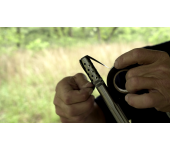
As a hunter that spends a lot of time spotting and stalking in some pretty nasty conditions, one thing that I'm always concerned about is making sure that my barrel is always clean. I don't want to have any obstructions down in it because we're hunting in mud, wind, and a lot of gravel many times. What I'm worried about is something getting in my barrel and obstructing the barrel.
A little tip: take some electrical tape and tape up the end of the muzzle. By doing so, you'll protect it from any debris from getting inside whatsoever. That way, you know that when you take your shot, your barrel will be nice and clean, and it doesn't affect your accuracy one bit.
#2 Talk to Your Finger
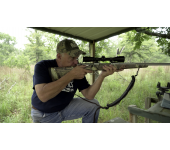
In order to become a better marksman, you need to learn how to squeeze a trigger. It sounds like it's pretty elementary, but it's true. People have a hard time practicing actually 'squeezing' the trigger. Instead, a lot of folks jerk the trigger. They'll wind up getting the target in their crosshairs, and then they JERK the trigger. That is not the right technique, as it causes you to move the firearm's barrel with the motion, leading to an inaccurate shot. Think of a golfer reading the green to perfection, lining up their shot, and pulling out of alignment as they take their putt. It’s a similar concept to jerking your rifle trigger.
What you want to do is you want to talk to your finger before putting your finger on the trigger. Focus on exactly what you're doing. Make sure you don't drape your entire finger across the trigger. Just pad the first pad of your finger directly on it. You're going to have wobble across your target, the crosshair is going to back and forth across it. Even if it's not much. Some people will try to time their shot so by the time their shot goes off, the crosshair will be in the center of the target.
The way that you practice to become a better shot is squeezing the trigger, but what you want to do is minimize your wobble back and forth. Minimize it where it will start with a bigger wobble, and focus until it gets much smaller. Focus, focus, focus, and focus on squeezing the trigger. It will make you a better shot!
#3 Find Your Target Down Range
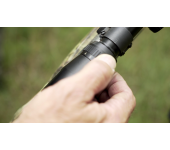
If you've ever had a problem finding your target downrange when you throw your rifle up to your shoulder, odds are you have your rifle scope power turned way too high. What I recommend is turning your rifle scope power all the way down, as it will increase your field of view (FOV). Many times, just because a scope has variable power, people crank it all the way up because they think it will help them see better. They then have extreme difficulty finding the target once they look through the scope because the viewing area is extremely small.
So, turn your power down on your scope because it will provide a greater field of view. At the same time, you may just want to practice pointing and aiming; pointing and aiming. Think about this; if someone was to ask you with your finger, to point at a clock, or point at a table, or point at the camera -- you don't have to sight down your finger. It's just that you're so used to pointing exactly where you're looking at with your finger. That's what you want to do with a rifle. At least, that's what I like to do.
Make sure the rifle is unloaded and the action is open. I take my scope, and I turn it all the way down. I point, and I'm on target. It's amazing how much more you can see by turning the power on your scope down.
#4 Shoot a 3-Point Setup
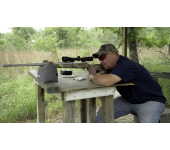
One of the easiest ways to become a better shot is to realize that if you have a three-point rest for your body, you're going to be more stable. Now, what I'm talking about is that you have one rest on the forend, one underneath the stock, and then have one underneath your shooting elbow. If you're a right-handed person like me, you’ll want to have your right arm supported. If I was left-handed, I'd want my left arm supported. I'm talking about a three-point setup. If you've ever shot off a bipod, you have two sticks out in front of you. And then, it's just not real stable. But if you shoot off a tripod, you've got three legs holding, and it's much more stable.
So, what we're talking about here is a three-point system for shooting. As you'll notice I have a nice stable system here. I have a bag up front, and a bag back here. What I'm going to do is load my rifle and take aim. You'll notice where my right elbow is. My right elbow actually rests and it supports my body wobble back and forth. You'll also notice the way my left arm is up on the table as well. I'm up snuggly behind the rifle. I've got a good solid rest. I'm just going to squeeze it off.
You will shoot a lot better, consistently, over and over again with a setup like this. Make sure you're wearing good hearing protection and shooting glasses. And make sure you're looking for that good rest. I like to call it a three-point rest.
#5 Zero Your Rifle
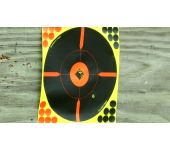
It's important that every time you change ammunition, you check your zero and make sure that it's shooting in the same place that you want it to. This is because different manufacturers, bullet weights, and powder loads can all affect how a bullet flies. Now, this tip I'm going to give you will help you get your rifle zeroed in with as few shots as possible.
We have a target set up at 100 yards, and we're going to take 1 shot. I have a nice rest, and it's really important that you have a nice, firm rest that you're shooting from. Don't use something that's going to wobble; make sure it's a nice, firm rest. Take a shot to see where it's shooting. Always make sure you're wearing ear and eye protection.
We can see through the scope that the shot is low and to the right. Here is the important stuff. This is how you're going to get it zeroed really quickly. We're going to look through the scope. Next, take the caps off the vertical and horizontal adjustments. Now take the scope and put the crosshair right on the center of the target. And now what I'm going to do is turn the turrets until the crosshair lines up with the bullet hole. Now what I did was turn the adjustments on the scope to the absolute dead center of the target and moved it over to the bullet hole. That's all I did. Now we're going to take another cartridge, put it in, take a shot, and see what happens.
The key to this is as you make the adjustment, you want to have it on a bag, a good solid rest, so it doesn't move. You have to have a good solid rest when you're making the adjustments without moving the rifle at all to make sure you are moving the crosshairs from the dead center of the target to the dead center of the first bullet hole. When you do that, you're adjusting -- you're lining everything up.
We're going to take one more shot here to see what happens. Very, very nice.
#6 Shoot Exploding Targets
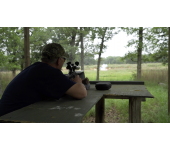
There's a lot of misinformation out there about exploding rifle targets. I'm going to tell you how they work.
First off, they come in two different components and are known as binary explosives. Take the mixing container that comes in the package, pour both components inside the mixing container, and shake it up vigorously until you have a uniform color. Once you have a uniform color, pour it back into the original container. This right here is what the target is going to look like. The only way that this can explode is if it is detonated with a bullet from a high-powered rifle. The most common version of this is tannerite. You can't take a match and light this; you can't explode it with a hammer. The only way that this exploding rifle target will explode is with a well-placed shot from a centerfire rifle. Now, I already have one of these targets downrange. We're going to go ahead and take a shot, and I'll show you what they look like.
Shooting exploding rifle targets can be a lot of fun, but always make sure you have hearing protection, your eye protection, and be a safe distance away from your target. They can help you train because you learn to expect a large reaction after you shoot, which can help you stay focused on your target in case you need to take a follow-up shot.
#7 Shoot Carbon Arrows

If you're an archer, odds are you're shooting carbon arrows. The amount of energy that is created and transferred from a compound or a crossbow into the shaft of the carbon arrow is tremendous. If your carbon arrow is damaged, it can cause you damage. There's a warning right on the arrow.
Always inspect every arrow to make sure there are no nicks, cracks, or imperfections in any way. This is because the amount of energy that is transferred when you release a carbon arrow is transferred directly into the shaft. If there is a nick or imperfection, it can snap that shaft, causing serious bodily harm.





















